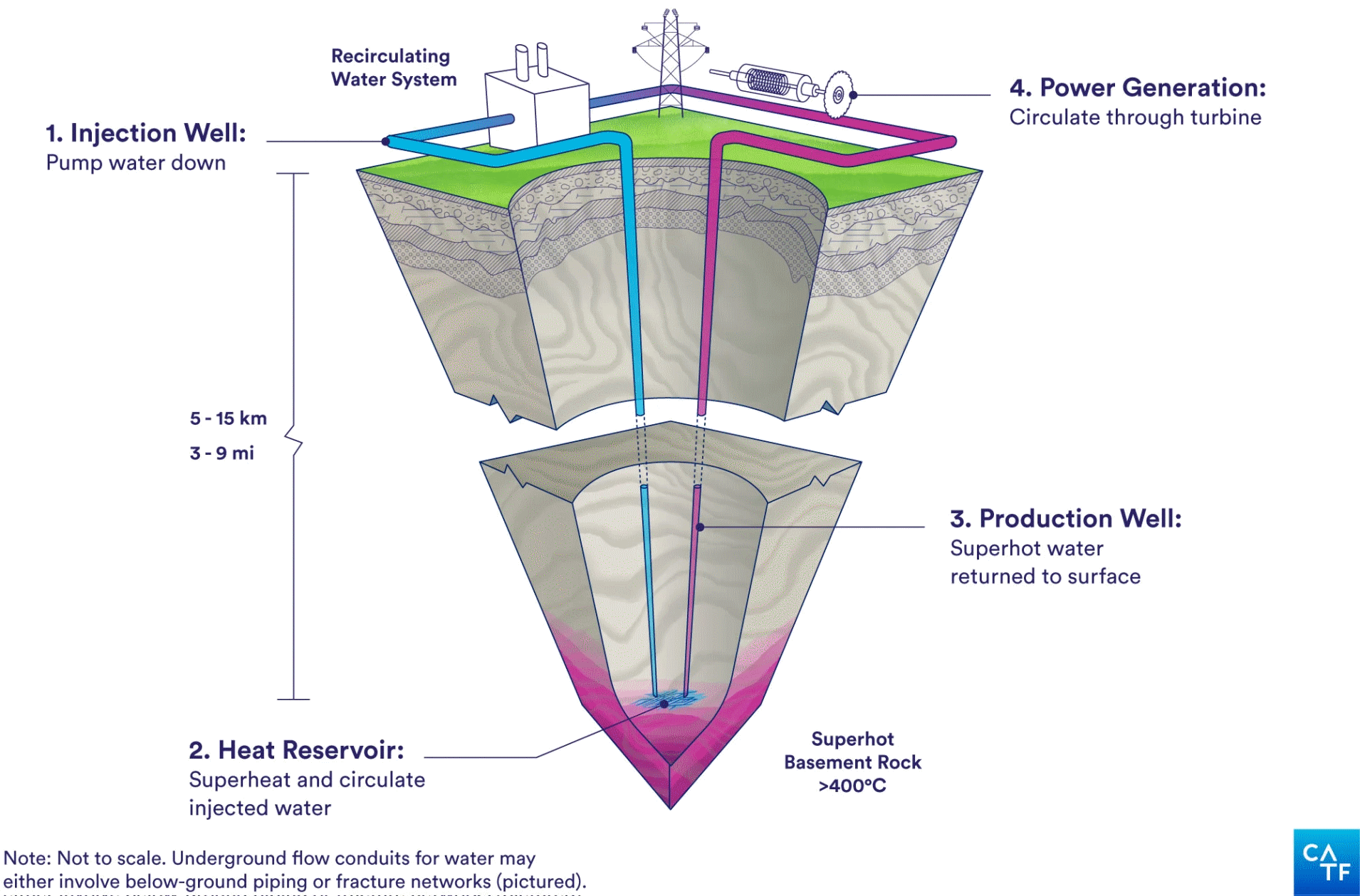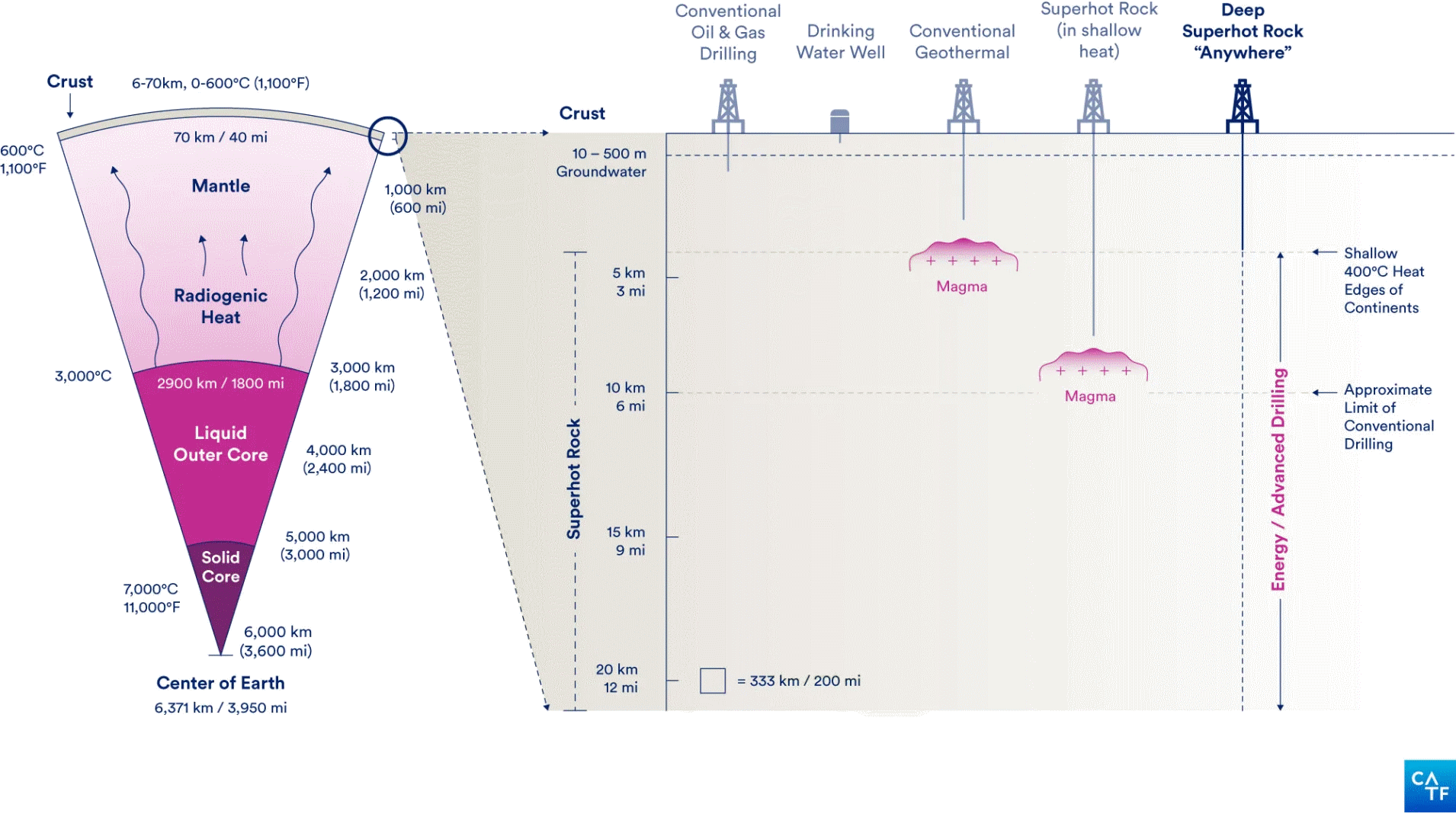Super-hot rocks 12 miles below surface could provide UNLIMITED clean energy worldwide
The future of clean, renewable energy is literally under our feet.
Earth's core is very hot - at least 400°C (752°F) at the center. If we can drill from the surface into what is called super-hot rock, we can access the Earth's heat and convert it into a huge source of carbon-free, always-available energy.
A new report by the Clean Air Task Force, a nonprofit climate organization, shows that this category of clean, baseload energy from super-hot rock has the potential to compete in cost with other carbon-free technologies.
The Clean Air Task Force commissioned a nonprofit geothermal organization, the Hot Rock Energy Research Organization, and an international clean energy consulting firm, LucidCatalyst, to estimate the cost of electricity from super-hot rock on a commercial scale. They determined that it could eventually cost between $20 and $35 per megawatt hour, which is competitive with what energy from natural gas power plants currently costs.
The Clean Air Task Force conducted the first test at a volcano in Iceland, where the Iceland Deep Drilling Project's "Krafla" well produced natural super-hot water at 845°F with an estimated power generation potential of 36 megawatts.
An important first step toward commercial energy from super-hot rock is to promote performance demonstrations in the 2020s. Several companies are currently preparing projects in this time frame, the Clean Air Task Force said in the report.
Super hot rock systems would revolutionize power plants as we know them.
For example, no large tracts of land would be required and no fossil-fuel or nuclear-powered boilers would be used.
Instead, super hot rock equipment will be limited to an underground heat collection system that connects the wells to the power generation facilities, which consist of steam turbines, power generators and transmission facilities, the report said.
The super hot rock systems would revolutionize power plants as we know them. For example, no large tracts of land are required or no fossil fuel and nuclear power boilers are used. Shown is an artist’s rendering of a super-hot rock power plant.
The Clean Air Task Force released a report on the breakthrough, which could be available by 2030, but also notes that the deepest well ever drilled was only eight miles long. The idea is to be able to drill anywhere to capture this clean energy.
FORGE Utah researchers have also tested methods of injecting water through ancient tectonic fractures found in these 400-million-year-old New Hampshire granites and half-billion-year-old Maine granites.
The problem remains the ability to drill deep enough to reach super-hot rocks anywhere on land.
The deepest well ever drilled in crystalline hard rock was just under 13 km deep when completed in the 1970s on Russia's Kola Peninsula. However, this was at much lower temperatures in the rock.
Today, large mechanical drilling rigs are used to drill into relatively shallow, super-hot rock to a depth of two to four miles.
The challenge of drilling and large-scale use of super-hot rock requires innovative new technologies that can cost-effectively reach super-hot wells in hard crystalline rock to depths of nine miles or more, the Clean Air Task Force said in the report.


